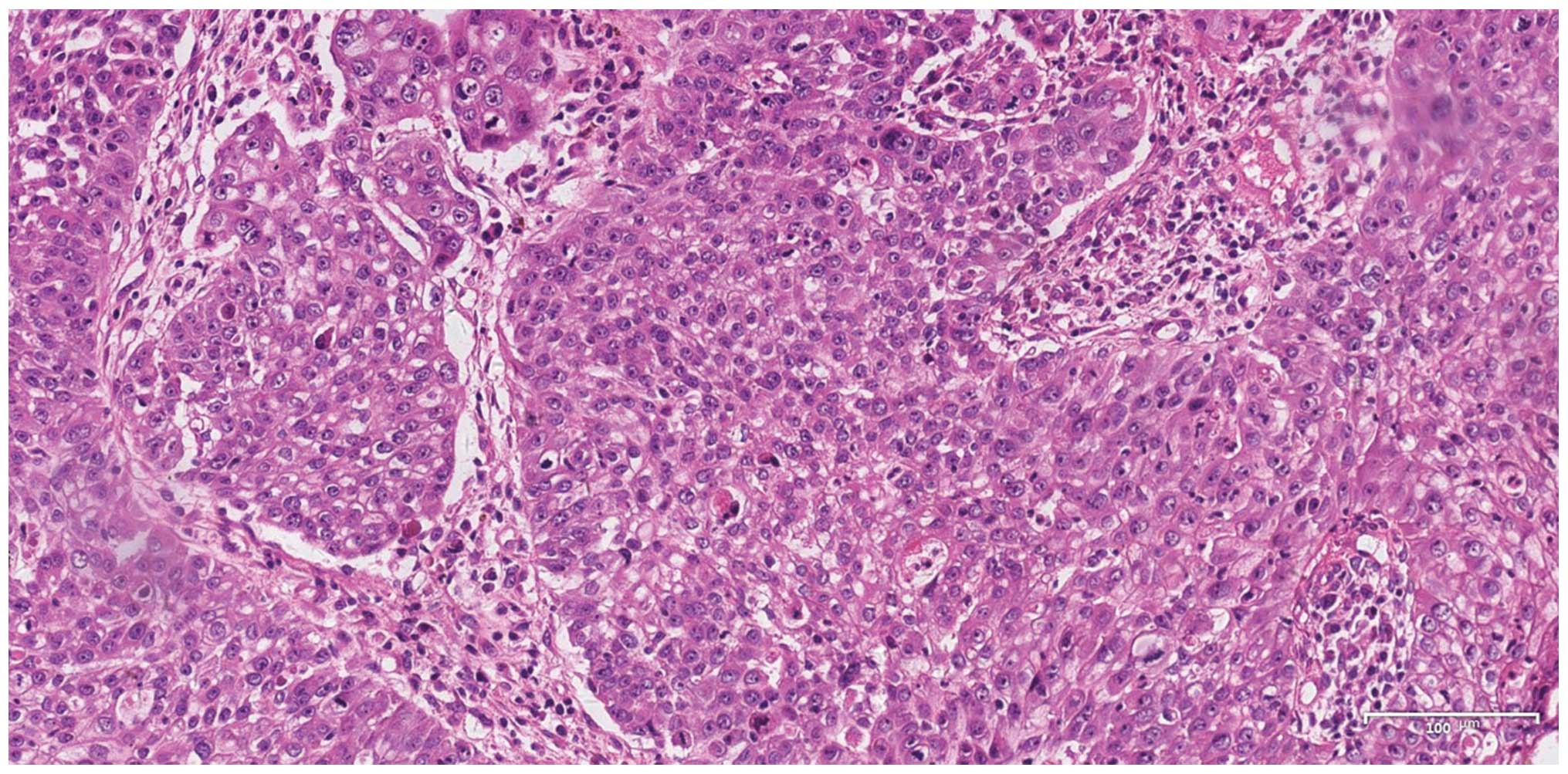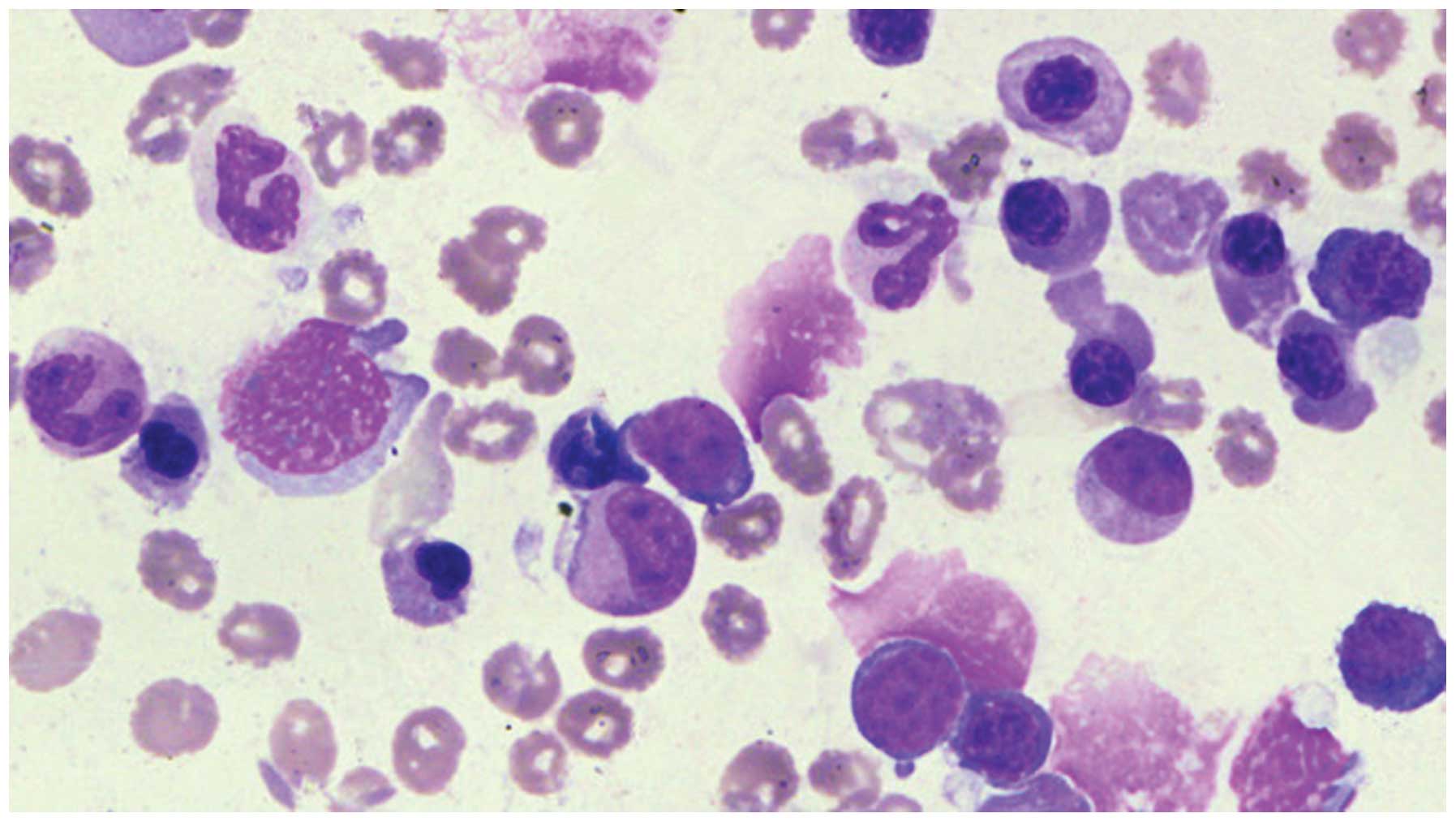Cervical carcinoma following myelodysplastic syndrome: A case report
- Authors:
- Du Meng
- Yan‑Lan Chai
- Yin‑Fang He
- Honglian Hu
- Rui Liu
- Zi Liu
-
View Affiliations
Affiliations: Department of Radiotherapy Oncology, The First Affiliated Hospital of Xi'an Jiao Tong University, Xi'an, Shaanxi 710061, P.R. China, Department of Gynaecology, Shangluo Central Hospital, Shangluo, Shaanxi 726000, P.R. China, Department of Blood Pathology, The First Affiliated Hospital of Xi'an Jiao Tong University, Xi'an, Shaanxi 710061, P.R. China
- Published online on: April 11, 2014 https://doi.org/10.3892/ol.2014.2061
-
Pages:
82-84
Metrics:
Total
Views: 0 (Spandidos Publications: | PMC Statistics:
)
Metrics:
Total PDF Downloads: 0 (Spandidos Publications: | PMC Statistics:
)
This article is mentioned in:
Abstract
Solid tumors following myelodysplastic syndrome (MDS) are rare and have no uniform treatment guidelines. The current study presents a rare case of a 47‑year‑old female diagnosed with cervical cancer (International Federation of Gynecology and Obstetrics stage IIIB) with an eight‑year history of MDS. A multidisciplinary treatment discussion was organized and a rigorous treatment plan was developed. With injection of granulocyte colony‑stimulating factor and interleukin‑11 factor, transfusion of red blood cell suspension and close monitoring of the blood count, the patient was administered radiotherapy, specifically intensity modulated radiation therapy. However, a degree IV bone marrow suppression repeatedly assaulted, leading to interruption of the radiotherapy treatment. Eventually, the total dose received by point A (2 cm above the cervical os marker and 2 cm perpendicular to the uterine axis along the plane of the uterus) was 51 Gy. One month later, a gynecological examination and magnetic resonance imaging of the pelvis revealed that the treatment resulted in a complete remission. In conclusion, radiation therapy can still be implemented to obtain satisfactory local control when the hematopoietic function of the bone marrow is weakened due to long‑term MDS.
View References
|
1
|
Misgeld E, Germing U, Aul C and Gattermann
N: Secondary myelodysplastic syndrome after fludarabine therapy of
a low-grade non-Hodgkin’s lymphoma. Leuk Res. 25:95–98. 2001.
|
|
2
|
Kondo H and Shinbo I: Myelodysplastic
syndrome associated with gastric cancer and colon polyp. Rinsho
Ketsueki. 38:1234–1237. 1997.(In Japanese).
|
|
3
|
Takahashi T, Kazama Y, Shimizu H, et al:
Myelodysplastic syndrome progresses rapidly into erythroleukemia
associated with synchronous double cancers of the stomach and the
papilla of Vater. Int J Hematol. 74:64–69. 2001.
|
|
4
|
Schaafsma J and Osoba D: The Karnofsky
Performance Status Scale re-examined: a cross-validation with the
EORTC-C30. Qual Life Res. 3:413–424. 1994.
|
|
5
|
Pecorelli S: Revised FIGO staging for
carcinoma of the vulva, cervix, and endometrium. Int J Gynaecol
Obstet. 105:103–104. 2009.
|
|
6
|
Rose BS, Aydogan B, Liang Y, et al: Normal
tissue complication probability modeling of acute hematologic
toxicity in cervical cancer patients treated with
chemoradiotherapy. Int J Radiat Oncol Biol Phys. 79:800–807.
2011.
|
|
7
|
Eisenhauer EA, Therasse P, Bogaerts J, et
al: New response evaluation criteria in solid tumors: revised
RECIST guideline (version 1.1). Eur J Cancer. 45:228–247. 2009.
|
|
8
|
National Comprehensive Cancer Network.
Practice Guidelines in Oncology. http://www.nccn.org/professionals/physician_gls/f_guidelines.asp.
Accessed May 30, 2013
|
|
9
|
Grogan M, Thomas GM, Melamed I, et al: The
importance of hemoglobin levels during radiotherapy for carcinoma
of the cervix. Cancer. 86:1528–1536. 1999.
|
|
10
|
Haensgen G, Krause U, Becker A, et al:
Tumor hypoxia, p53, and prognosis in cervical cancers. Int J Radiat
Oncol Biol Phys. 50:865–872. 2001.
|












